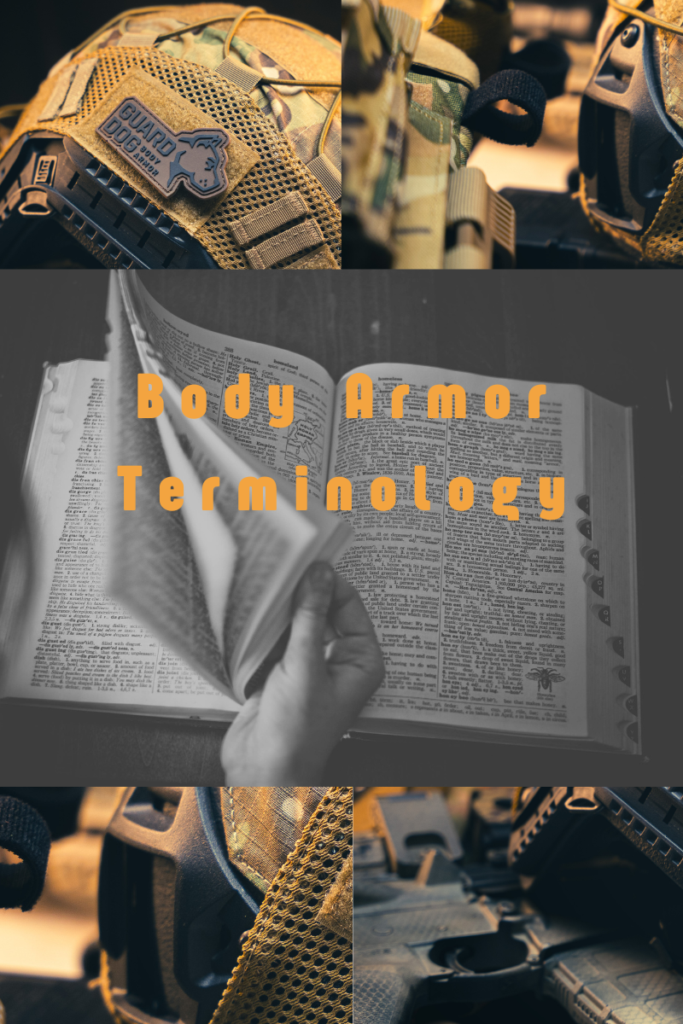The Language of Body Armor: More Than Just Plate Carriers and Bulletproof Vests
When diving into the world of personal protection, the terms you encounter can feel overwhelming. Beyond the popular terms like “plate carriers” and “bulletproof vests,” there’s a wide array of terminology that newcomers and even seasoned buyers may find confusing. What’s the difference between a tactical chest rig and a load-bearing vest? How do soft armor panels compare to trauma pads?
In this article, we’ll explore lesser-discussed but equally important terminology. Using Guard Dog Body Armor’s products and insights, we’ll clarify the overlaps, differences, and when these terms matter in your decision-making process.

Tactical Chest Rigs vs. Plate Carriers
- Tactical Chest Rig: Designed for carrying gear and ammo but doesn’t include ballistic protection. Commonly used in situations where mobility and gear access are key, such as by hunters or airsoft enthusiasts.
- Plate Carrier: Combines the gear-carrying capability of a chest rig with ballistic protection by incorporating armor plates.
Example from Guard Dog Body Armor:
While Guard Dog focuses on plate carriers like the Sheppard Plate Carrier, their designs often feature MOLLE webbing, blending the storage functionality of a chest rig with protective capabilities.
Soft Armor Panels vs. Trauma Pads
- Soft Armor Panels: Flexible ballistic materials designed to stop handgun rounds, often used in bulletproof vests or as inserts for backpacks and other gear.
- Trauma Pads: Non-ballistic inserts placed behind armor plates to reduce blunt force trauma and improve comfort.
Key Differentiation: Soft armor panels offer ballistic protection, while trauma pads are for added impact mitigation.
Example from Guard Dog Body Armor:
Guard Dog’s backpack armor inserts serve as versatile soft armor panels, whereas trauma pads are a popular accessory for their steel and ceramic plate offerings.
Stab-Resistant Vests vs. Bulletproof Vests
- Stab-Resistant Vests: Designed to protect against sharp objects like knives or spikes. These are common in corrections and security environments.
- Bulletproof Vests: Engineered to stop bullets, often using soft or hard armor.
Important Note: Not all bulletproof vests are stab-resistant, and vice versa.
Guard Dog Body Armor Insight:
While Guard Dog primarily focuses on ballistic protection, pairing their soft armor inserts with stab-resistant outer layers can provide dual protection in high-risk environments.
Load-Bearing Vests vs. Plate Carriers
- Load-Bearing Vest: A tactical vest designed for carrying equipment, not intended to provide ballistic protection. Often used by military personnel for utility and storage.
- Plate Carrier: Combines storage functionality with ballistic protection, making it a more comprehensive solution.
Example from Guard Dog Body Armor:
Guard Dog’s Cerberus Plate Carrier exemplifies a modular design that rivals load-bearing vests in versatility while adding vital protection.
Ballistic Helmets vs. Riot Helmets
- Ballistic Helmet: Designed to provide protection against shrapnel and bullets. Essential for combat scenarios.
- Riot Helmet: Offers protection against blunt force and debris but doesn’t provide ballistic resistance.
Key Takeaway: While ballistic helmets are part of full personal protection systems, riot helmets prioritize crowd-control scenarios.
Guard Dog Body Armor Context:
Though primarily a body armor provider, Guard Dog Body Armor emphasizes modular setups that complement ballistic helmets, forming a complete protection solution.
Bulletproof vs. Bullet-Resistant: The Language of Protection
The term “bulletproof” is commonly used but technically inaccurate. Body armor is better described as “bullet-resistant,” as no armor can guarantee 100% protection against every projectile.
Key Takeaway: Always check the armor’s threat level rating (e.g., Level II, Level III, Level IV) to understand its specific capabilities.
Example from Guard Dog Body Armor:
Guard Dog’s Level III+ Steel Plates are designed for rifle threats, emphasizing resistance rather than an absolute promise of being “bulletproof.”
When Do These Differences Matter?
- Matching the Gear to Your Needs:
If your primary concern is handgun threats, soft armor is sufficient. For rifle protection, invest in plate carriers and hard plates. - Understanding Compatibility:
Trauma pads and ballistic plates work together, but they serve distinct purposes. Don’t confuse these accessories when assembling your gear. - Mission-Specific Requirements:
A tactical chest rig may suffice for recreational shooting, but a plate carrier is essential for security or combat scenarios.
Guard Dog Body Armor’s Commitment to Education and Protection
Guard Dog Body Armor’s blog and product pages are tailored to help you navigate these terms and make informed decisions. Whether you’re choosing between soft armor panels and hard plates or assembling a modular tactical setup, Guard Dog’s offerings simplify the process.
Final Thoughts: Invest Confidently in Your Protection
The world of body armor can be complex, but understanding the distinctions between terms like plate carriers, soft armor panels, and trauma pads ensures you’re equipped for the threats you face. Guard Dog Body Armor stands ready to help with products designed for every need and scenario.
Explore our wide range of plate carriers, armor plates, and accessories at gdbodyarmor.com/shop and build your ultimate personal protection system today!
